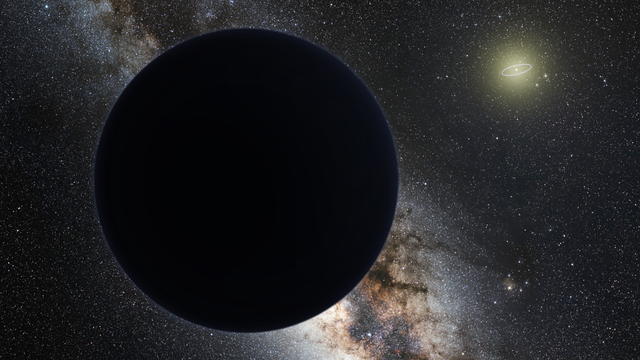- Get link
- X
- Other Apps
- Get link
- X
- Other Apps

A New Dwarf Planet Challenges the Planet Nine Hypothesis
The outer reaches of our solar system continue to surprise us! Scientists have discovered a potential new dwarf planet, designated 2017 OF201, and its unique orbit is throwing a wrench into the popular Planet Nine theory. This intriguing find adds another piece to the puzzle of our solar system's distant realms, but it also complicates the search for the elusive Planet Nine.
"We were very excited to discover 2017 OF201 because it was not expected at all," said Sihao Cheng of the Institute for Advanced Study in Princeton, who led the study. "It's very rare to discover an object both large and with an exotic orbit."
Key Facts About 2017 OF201:
- Its aphelion (farthest point from the sun) is over 1,600 times Earth's orbital distance.
- Its perihelion (closest point to the sun) is 44.5 times Earth's orbital distance, similar to Pluto's.
- It takes approximately 24,256 years to complete one orbit around the sun.
- It’s estimated to be around 435 miles (700 kilometers) in diameter, potentially qualifying it as a dwarf planet.
Venturing into the Outer Solar System
Beyond Neptune lies the Kuiper Belt, a vast region populated by icy bodies like Pluto and Charon. Beyond that, the Scattered Disk extends even further, hosting objects on highly elongated orbits, influenced by Neptune's gravity and even the galactic tide. Finally, the distant Oort Cloud, thought to be the source of long-period comets, marks the solar system's theoretical boundary.
Discovering trans-Neptunian objects (TNOs) like 2017 OF201 is crucial for understanding these remote regions.
Why 2017 OF201 Matters
While around 5,000 TNOs have already been cataloged, 2017 OF201 stands out due to its peculiar orbit. At its farthest, it's a staggering 157 billion miles (244 billion kilometers) from the sun. Discovered by analyzing data from the Dark Energy Camera Legacy Survey (DECaLS), it was also found in older data from the Canada–France–Hawaii Telescope.
The object's last perihelion occurred around 1930, the same year Pluto was discovered. However, at magnitude +20.1, 2017 OF201 would have been much fainter than Pluto, making its discovery back then unlikely.
The Planet Nine Problem
The existence of 2017 OF201 poses a challenge to the Planet Nine hypothesis. Introduced in 2016, this theory suggests a large, undiscovered planet is gravitationally influencing the orbits of some extreme TNOs, causing them to cluster. However, 2017 OF201's orbit doesn't conform to this clustering.
"Many extreme TNOs have orbits that appear to cluster in specific orientations, but 2017 OF201 deviates from this," explained Jiaxuan Li.
Cheng elaborated that while Planet Nine's existence wouldn't completely preclude unclustered orbits, those orbits should be unstable over long periods. The question now is whether Planet Nine would have had enough time to disrupt 2017 OF201's orbit.
The Big Picture
Intriguingly, 2017 OF201 is likely not alone. Since it's only detectable for a tiny fraction of its orbit, its discovery suggests many more similar objects could be lurking in the darkness.
- Cheng estimates there could be around a hundred other objects of similar size and orbit.
Despite the challenges it poses to Planet Nine, the discovery of 2017 OF201 underscores the vastness and mystery of our solar system. Even with advancements in telescopic technology, there's still much to uncover in our own cosmic backyard.
As Cheng aptly concludes, "Even though advances in telescopes have enabled us to explore distant parts of the universe, there is still a great deal to discover about our own solar system." The search continues!
Tags: dwarf planet, new discovery, outer solar system, 2017 OF201, Kuiper Belt, Pluto orbit, solar system, planetesimals, Sihao Cheng, Earth orbit
Source: https://www.space.com/astronomy/dwarf-planets/scientists-found-a-possible-new-dwarf-planet-it-could-spell-bad-news-for-planet-9-fans
2017 OF201
dwarf planet
Earth orbit
Kuiper Belt
New discovery
outer solar system
planetesimals
Pluto orbit
Sihao Cheng
solar system
- Get link
- X
- Other Apps
Comments
Post a Comment